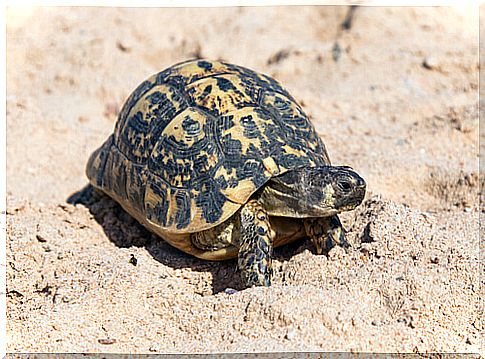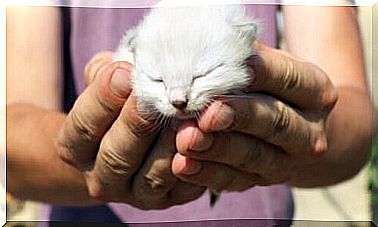Pyramidism In Turtles

Among the various diseases that can affect animals of the chelonian order, pyramidism in land turtles is one of the most important, as it largely depends on our handling of these animals.
What is pyramidism in turtles
Pyramidism in turtles is a disease that causes deformations in the shell of these reptiles. The shields that form the carapace are deformed, appearing abnormally with pyramid-shaped plates.
This change affects the land turtle’s organism, reducing the space that the internal organs can occupy. What this disease most affects is the animal’s lung capacity.
In addition, animals with pyramidism are more fragile and may have other deformities in the extremities and develop attrition. The constant friction of the hoof with the spine can also cause deformations in the spine, leading the animal to paralysis.

What Causes Pyramidism in Turtles
There are several causes of this disease that affects land turtles in captivity. Pyramidism in turtles occurs when the animal’s needs are not met or, on the contrary, are met in excess.
Probably the most important cause is an inadequate diet, and it is a common mistake to give these reptiles too much animal protein. It is important to point out that most species of terrestrial turtles must consume meat only occasionally, as they are mainly vegetarian animals.
It is best to consult a veterinarian specializing in exotic animals or the place where we acquire our pet. In general, turtles should consume a diet based on fruits and vegetables, with special care for sources of calcium and phosphorus, nutrients that prevent metabolic bone disease.
Calcium absorption problems are also another cause of pyramidism, in addition to vitamin D deficiency. Therefore, it is necessary for the animal to sunbathe and diagnose possible hormonal or thyroid problems.
Finally, excess food in the diet or lack of moisture, in addition to the existence of species more prone to developing the disease, are other possible triggers for piramidism in turtles.

Treatment and prevention of pyramidism in turtles
This disease does not yet have a treatment and once the hoof is deformed, it is impossible for it to return to its original state.
The best prevention is one that directly attacks the causes of the disease. We can sum it up as having to provide an adequate and very balanced diet for our species of turtle. In general, turtles need to eat calcium-rich vegetables such as dandelion.
It is also important to be aware of the temperature and humidity conditions of the terrarium, which must have an uncovered part. If this is not possible, you can walk the animal in the garden or backyard daily.
It is advisable to visit the veterinarian so that he/she recommends the best diet. In addition, the professional will be able to assess the need for supplementation of calcium and other vitamins.









